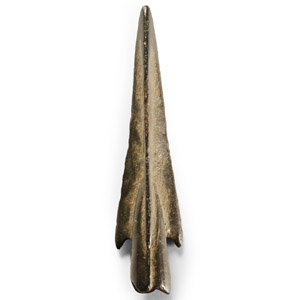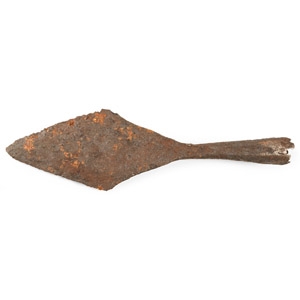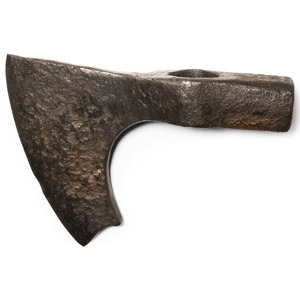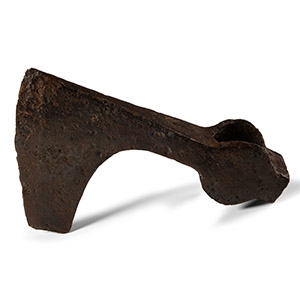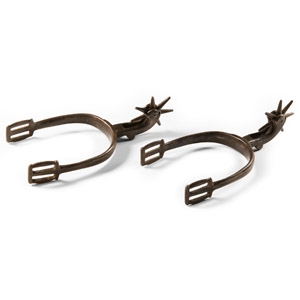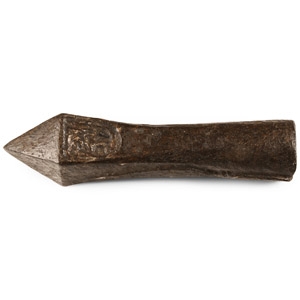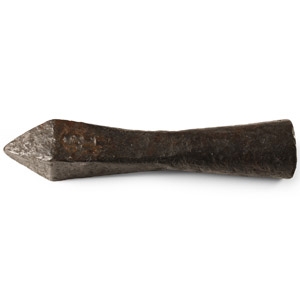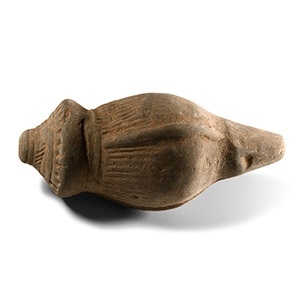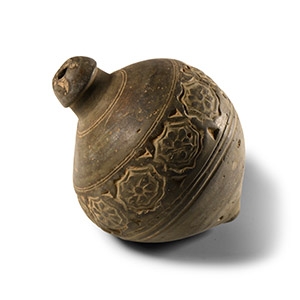Home > Auctions > 4 June - 8 June 2024
Ancient Art, Antiquities, Natural History & Coins
Auction Highlights:
Acquired from Red House Antiques, York, UK, in 2008.
Ian Wilkinson collection, Nottinghamshire, UK.
Acquired prior to 2000.
Ex Private collection, Cambridgeshire, UK.
Property of a Kent lady collector.
From the H.N. collection, Milton Keynes, Berkshire, UK, 1990s.
Cf. Arendt, W. I., Granaten des 13-14. Jahrhunderts, die an der Wolga gefunden sind, Zeitschrift fur Historische Waffen-und Kostumkunde, 11 (1926-8), p.42; cf. Arendt, W., Die Spharisch-konischen Gefäße aus Gebranntem Ton, ibid; cf. Ayalon, D., Gunpowder and Firearms in the Mamluk Kingdom, London, 1956, p.16.
The shape corresponds with a fire grenade in the Kars Museum, no.14.09.2009. Apart from the use of siphons or manual flame-throwers called cheirosiphona, special corps of Roman soldiers employed terracotta grenades, in the form of small jars, abundantly evidenced in archaeological excavations. They were called μεσαία kακαβιά or κυτροκακάβια where the former had a bulbous shape and the latter a more cylindrical form.
From the collection of a Californian, USA, gentleman, dating back to the late 1960s.
Cf. Sedov, B.B., Finno-Ugri i Balti v Epokhi Srednevekovija, Moscow, 1987, pl V, items 16, 17, 20; pl.CXXIV, item 1.
From the private collection of a London gentleman, from his grandfather's collection formed before the early 1970s.
Cf. Hjardar, K. & Vike, V., Vikings at war, Oxford-Philadelphia, 2016, p.163, for the typology of Viking axes, letter B.
The axe belongs to a category of bearded axes. The skeggöks (bearded axes) had a long edge, designed to split tree-trunks into planks and beams. Usually the beard was at the bottom end of the blade, but some axes did sometimes have extra long blades.
Property of an Essex, UK, gentleman.
Ex German art market, 2000s.
Acquired from an EU collector living in London.
From the collection of Surrey, UK, gentleman.
From a Japanese collection, 1990s.
Cf. Moorey, P., Catalogue of Ancient Persian Bronzes in the Ashmolean Museum, Oxford, 1971, no.60, for a sword contained in a similar sheath.
Scabbards with a curve at their base are shown on reliefs and seals from Anatolia from the middle of the second millennium to the 9th century B.C.
Tucker collection, Buckinghamshire, UK; formed in the 1980s.
Property of a Kent lady collector.
Tucker collection, Buckinghamshire, UK; formed in the 1980s.
Property of a Kent lady collector.
From a specialist collection of militaria, London, UK, collected 1990s onwards.
Cf. Arendt, W. I., Granaten des 13-14. Jahrhunderts, die an der Wolga gefunden sind, Zeitschrift fur Historische Waffen-und Kostumkunde, 11 (1926-8), p.42; cf. Arendt, W., Die Spharisch-konischen Gefäße aus Gebranntem Ton, ibid; cf. Ayalon, D., Gunpowder and Firearms in the Mamluk Kingdom, London, 1956, p.16
Apart from the use of siphons or manual flame-throwers called cheirosiphona, special corps of Roman soldiers employed terracotta grenades, in the form of small jars, abundantly evidenced in archaeological excavations. They were called μεσαία kακαβιά or κυτροκακάβια where the former had a bulbous shape and the latter a more cylindrical form.
From a specialist collection of militaria, London, UK, collected 1990s onwards.
Accompanied by an academic paper by military specialist Dr Raffaele D'Amato, dated 15 July 2019 and titled 'Eastern Roman Empire - Greek Fire Bomb or Hand Grenade (μεσαίον kακάβιον) 9th-11th century AD'.
Cf. Arendt, W. I., Granaten des 13-14. Jahrhunderts, die an der Wolga gefunden sind, Zeitschrift fur Historische Waffen-und Kostumkunde, 11 (1926-8), p.42; cf. Arendt, W., Die Spharisch-konischen Gefäße aus Gebranntem Ton, ibid; cf. Ayalon, D., Gunpowder and Firearms in the Mamluk Kingdom, London, 1956, p.16.
Apart from the use of siphons or manual flame-throwers called cheirosiphona, special corps of Roman soldiers employed terracotta grenades, in the form of small jars, abundantly evidenced in archaeological excavations. They were called μεσαία kακαβιά or κυτροκακάβια where the former had a bulbous shape and the latter a more cylindrical form.
1141 - 1152 of 2809 LOTS

.jpg)

.jpg)
.jpg)
.jpg)
